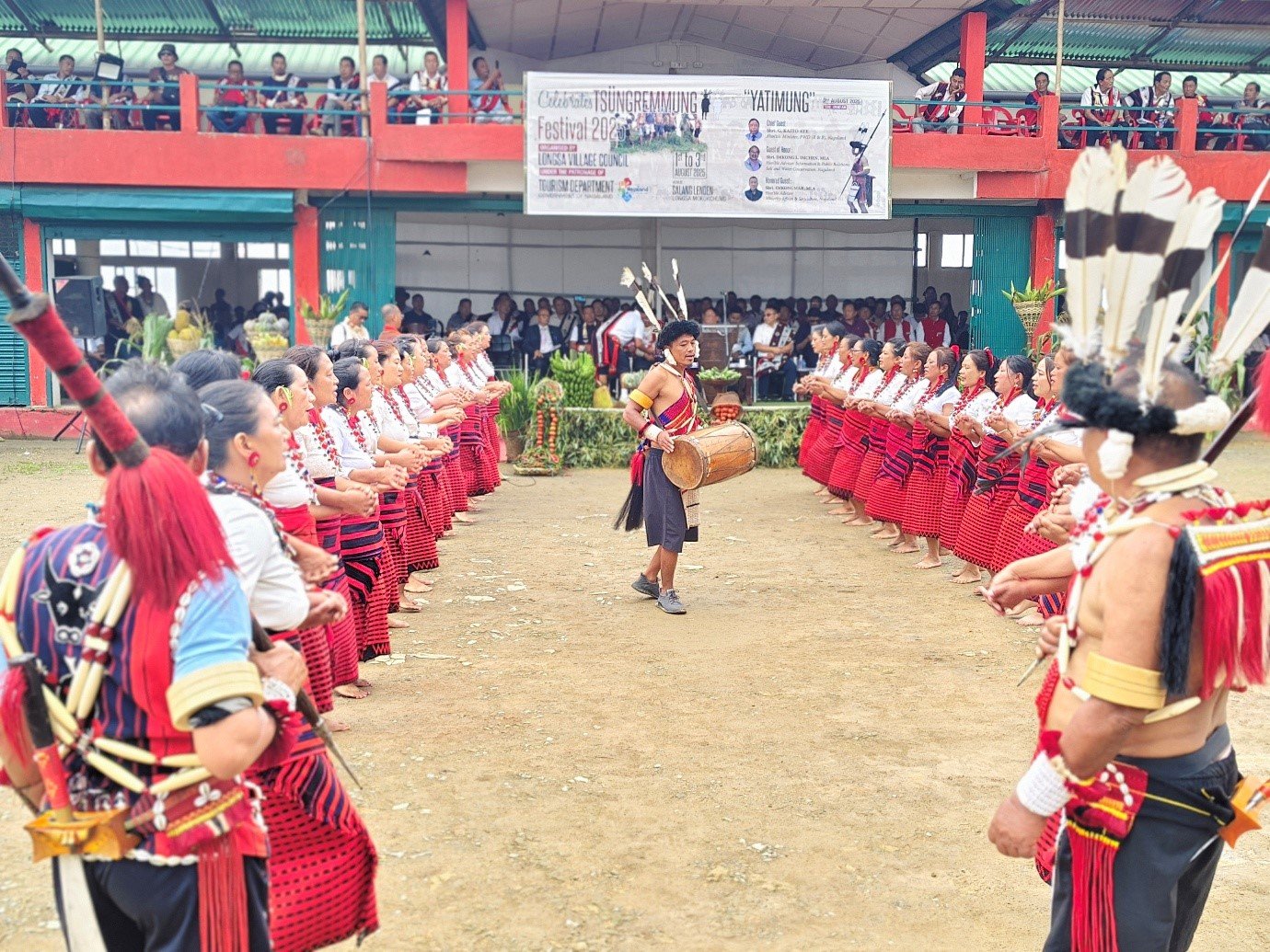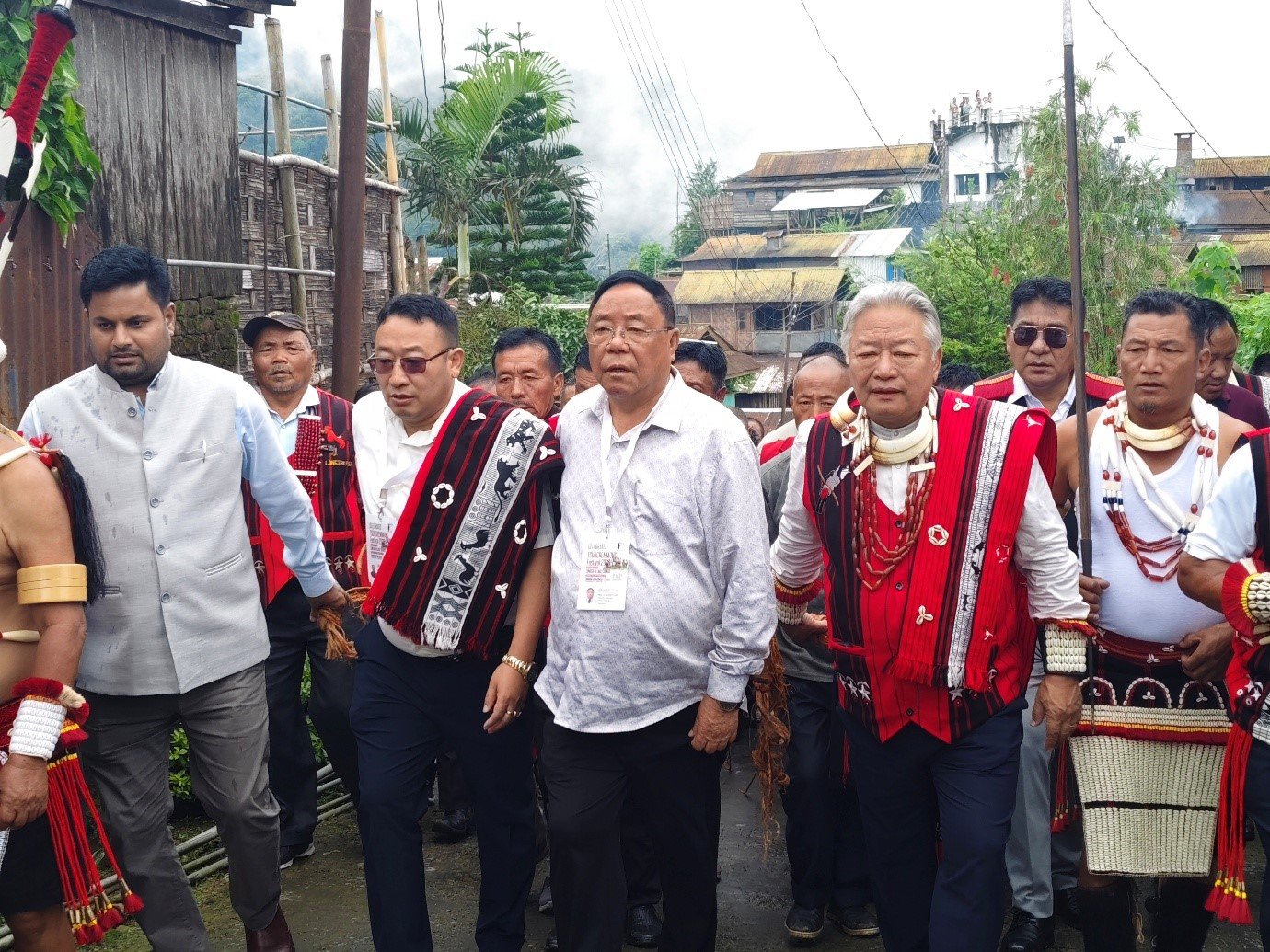Longsa village celebrated Tsüngremmung Festival 2025 organized by the village council under the patronage of the department of Tourism on August 2. The second day of the festival is known as “Yatimung” which was graced by minister for PWD (R and B) G Kaito Aye as the chief guest, and MLA and advisor IPR Imkong L Imchenn as the guest of honour while
MLA and advisor Minority Affairs Imkongmar attended as the honoured guest.
Spaking on the occasion, former chief secretary Alemtemshi Jamir said this year’s Tsüngremmung festival holds special significance for Longsa village as it marks a turning point in the village’s history. He explained that Longsa had remained divided for four
years due to a deep misunderstanding and internal rift. Despite numerous efforts by the Church and the community, reconciliation could not be achieved.
However, he described the sudden decision of the people to unite as a miraculous event witnessed in their lifetime. “We have prayed and worked tirelessly for three to four years for unity, and we now thank God for not deserting Longsa,” he said.
On this festive occasion, he said, the villagers are not only celebrating but also offering prayers of gratitude and seeking further blessings from God.
Addressing legislator Imkongmar, under whose Mongoya assembly constituency Longsa falls, Jamir made a plea regarding the state of road connectivity. He recalled that Longsa once served as a key route to Tuensang but has now been sidelined due to the diversion of the National Highway, rendering it isolated. He emphasized that the application submitted by the villagers is not limited to Longsa alone, but also affects Tichipami, Surumi, Yehemi, Aghunato, and further extends to Kiphire.
Calling it one of the shortest and most strategic routes he had studied during his service, he said the villagers’ appeal is not just about a local deficiency, but a deep-seated longing for development and connectivity.
Download Nagaland Tribune app on Google Play

Jamir also urged minister Aye to consider the request with seriousness, especially the urgent need for the construction of the bridge, which he warned is critical for the entire region’s connectivity. He cautioned that if the bridge is lost, the whole area would be disconnected, affecting not only Ao villages but also those of the Sema and Sangtam communities. He
informed that the village had earlier made efforts to develop the route into a trade road, managing to reach Aghunato, but it has been about six to seven years, and has fallen into disuse. He appealed that the road be revived as a major state highway, connecting further to Kiphire and eventually to Myanmar.
Addressing the gathering, minister Aye emphasized the importance of unity, respect for elders, and preserving cultural values to ensure a stronger and more prosperous Nagaland.
He urged the younger generation not to forget the legacy and wisdom of the elders, saying that respecting their contributions is key to the continued progress of the village and society. “Work for unity and harmony among our people. That is how development and prosperity will come,” he said.

Highlighting the significance of the gathering, he appreciated the presence of different tribes and neighboring villages, calling it a symbol of a uniting spirit and a positive sign of long-term relationships.
He reminded the audience that even though the Naga community may seem small, unity can grow through cultural exchanges, festivals, and shared experiences. “When we understand each other’s ways of life, we stop seeing each other as strangers. We become one,” he said, adding that togetherness should be reflected not only in community feasts but also in the church and social life.
“Let us grow and change, but also remain considerate and respectful—not just toward
individuals, but toward the community as a whole,” Aye said.
Responding to representation submitted by the Longsa Village Council (LVC), the minister said the intermediate road and was funded by NEC, but the NEC fund was limited
He mentioned that he has further taken the issue this Financial Year but the government was not in a position to commit owing to its huge budget projection. However, he said, from the Dikhu river till Longsa, he will ask the government to commit into the road while he said, for the time being, some maintenance will be done within his own resources.
He also acknowledged the demand for improvement of the Longsa–Suruhuto–Aghunato road and informed that the state government had already submitted a proposal under the North Eastern Council (NEC) with a projected estimate of ₹200–300 crores. Although the amount is substantial, he assured the gathering that the project has not been abandoned and efforts are being made to push it forward.
The minister recalled that the road project is originally the “brainchild” of Alemtemshi Jamir during his time. However, he explained that due to limited state resources, such a project cannot be undertaken by the state government alone. He recommended the need for a Detailed Project Report (DPR), which is essential for the proposal to be considered.
While routine maintenance is ongoing, he admitted that large-scale development projects often face funding challenges, resulting in delays.
Reiterating his support for the demands raised by the LVC, he pledged to take them up with the government. He also highlighted the importance of community involvement in
developmental activities and encouraged for Project Implementation Units.
Advisor Imchen, in hid address expressed his support to LVC and urged upon the minister to expedite the matter.
Advisor Imkongmar commended the village for consistently upholding the tradition of celebrating Tsüngremmung each year, noting that it is not only a blessing for Longsa but for the entire Ongpangkong region. Encouraging his constituents, he said, “You have sent me to help you. With my ability and capabilities, I am ready to assist you in every possible way, and you can approach me freely.”
Earlier in the program Noklenrenba Tatar shared the significance of Tsüngremmung. The event also included a cultural presentation by Sangpu Mepu, Longsadi Mepu, Imnasanger, Longsa Watsü Telen, MTLST, and cultural troupes from Tichipami and Chari villages.

